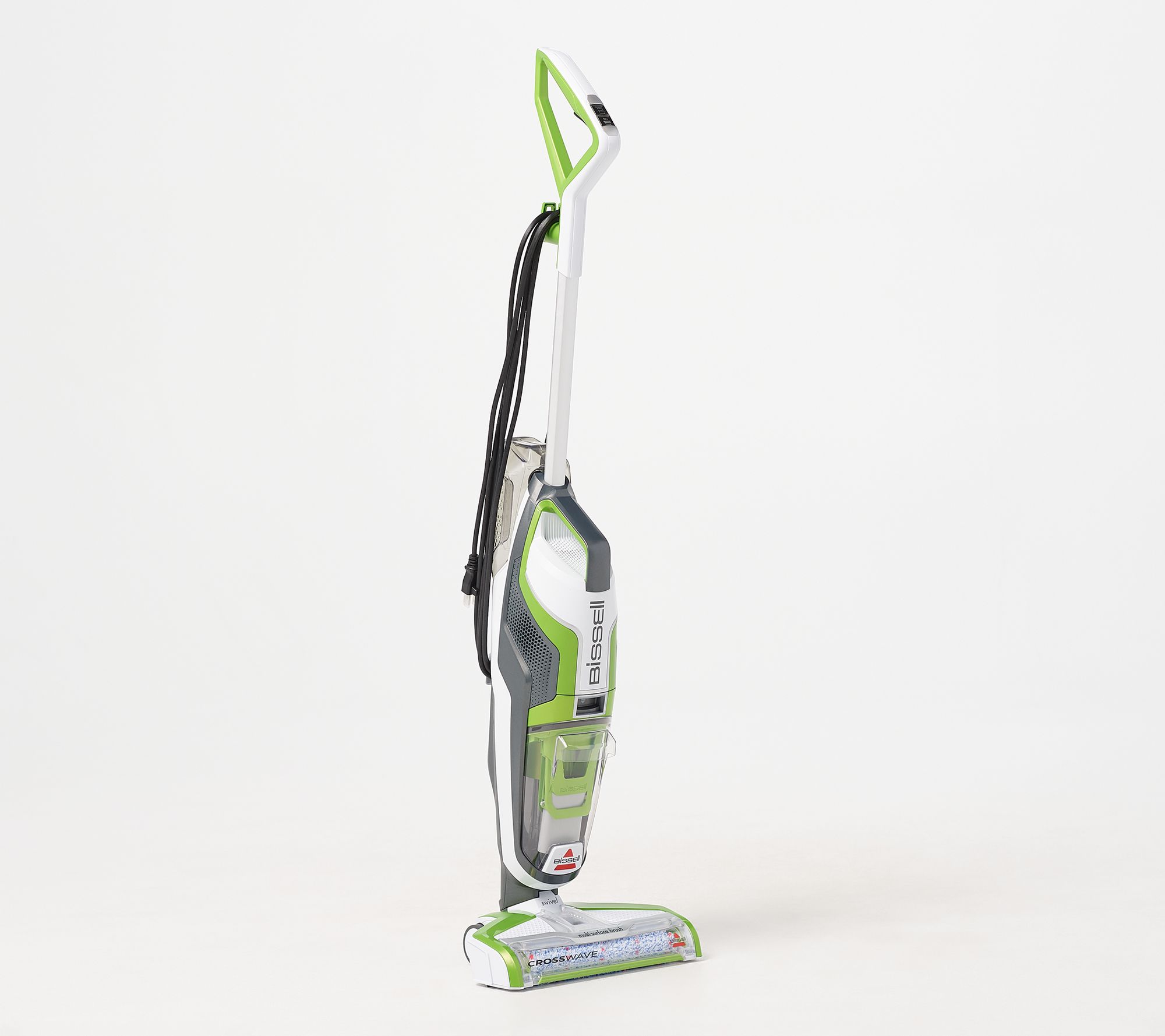BISSELL® CrossWave® Pet Pro Multi-Surface Wet Dry Vacuum Cleaner 2306
Vacuum and wash at the same time with CrossWave® Pet Pro Multi-Surface Cleaner!
The BISSELL® CrossWave® Pet Pro vacuums and washes everyday pet messes off sealed hard floors and area rugs in one simple step. It’s a good replacement for a wet dry vacuum because it goes a step further than just vacuuming wet messes by washing your floors, too. CrossWave® Pet Pro also cleans better than a sponge mop and bucket * with features like the Tangle-Free Brush Roll, Pet Hair Strainer and our specially engineered Multi-Surface Pet Formula.
Vacuum & Wash at the Same Time
Save time by cleaning your floors in one easy step with the BISSELL® CrossWave Pet Pro
Multi-Surface Pet Formula
Reduces odors with specially engineered BISSELL® Pet Formula with Febreze Freshness.
Tangle-Free Brush Roll
Minimize pet hair from wrapping around the brush roll and getting tangled while cleaning.
Multi-Surface Cleaning
Safe and effective for use on tile, sealed wood floors, carpet, rugs, sealed laminate, linoleum, rubber floor mats, pressed wood floors, and more.
Pet Hair Strainer
Separate pet hair and other large debris from liquid to reduce sink clogging and empty easier.
Additional information
| Surface Type | Area Rugs, Bare Floors, Hard Floors, Sealed Wood Floors |
|---|---|
| Power Rating | 4.4 amps |
| Cleaning Path Width | 12" |
| Power Source | Corded |
| Brush System | Tangle Free |
| Power Cord Length | 25' |
| Dirt Cup Capacity | 14.5 oz |
| Tank Capacity | 28 oz. |
| Color | Titanium With Grapevine Purple and Sparkle Silver |
| Weight | 11.5 lbs |






by Greg
It’s perfect for an apartment especially when you have a dog.
by Gregory
The ordering process through your website was simple, but delivery was disappointing. I ordered on 12/17/20 and had an initial delivery date of 12/23/20, with actual delivery occurring on 12/30/20. We haven’t used the Pet Pro that was purchased, but have used my mother-in-law’s (which is why we bought one). I am happy to have a faster method for cleaning our downstairs wood floors (~2,000 sqft). My only complaint so far is the size of the containers for cleaning solution and dirty water, which is I rated 4 stars. I find that you must be careful when vacuuming, both the cleaning solution and rinse water, to ensure the floor is dry enough and heavy streaks of water haven’t been left behind. But the unit we’ve used did a good job as long as we were diligent. Definitely removes more dirt than Swiffer – which just pushes dirt from one area to another.
by Lisa
Works very good and cleans up easy.
by Tanya
Awesome. Wish that cleaning the Brushes after use was easier. But this machine works great.